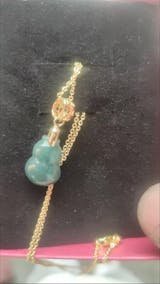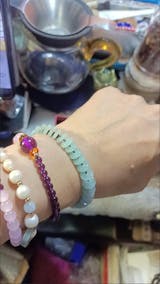What Does the Dragon Symbolize: Unveiling the Mystique of Dragons in Chinese Culture
- Introduction
- The Dragon's Origin
- The Dragon in the Chinese Zodiac
- The Dragon's Significance in Chinese Culture
- Types of Dragons
- Conclusion
Introduction
The Chinese Dragon, as a significant symbol in traditional Chinese culture, holds a crucial position in China's history and heritage. While being a mythical creature, the Chinese dragon is a composite entity, incorporating features from various animals such as horses, dogs, fish, birds, deer, and snakes. In the rich tapestry of Chinese culture, the dragon is endowed with symbolism representing auspiciousness, power, and nobility. Let's delve into the captivating tale of the dragon and its significance in Chinese culture.

The Dragon's Origin
Long long ago in ancient China, there existed a mystical creature known as the "Dragon Deity." This celestial being was revered as the guardian of the heavens and the earth. With a shimmering golden-scaled body and eyes radiating profound wisdom, the Dragon Deity was considered the protector of the Chinese people, bringing prosperity and blessings to the land.
The villagers would pray to the Dragon Deity in times of drought or flooding, seeking its divine intervention to bring rain or halt the deluge, safeguarding their crops and homes.
One year, a severe drought plagued the entire village, threatening the livelihood of its inhabitants. The village elders decided to gather and collectively beseech the Dragon Deity for aid. As they fervently prayed by a clear, flowing river, a miraculous event unfolded. Dark clouds gathered in the sky, thunder roared, and a colossal dragon descended from the heavens, its sinuous form coiling through the air with resounding roars. As the Dragon Deity appeared, rain poured down, rejuvenating the parched land and saving the village from peril.
The awe-inspiring appearance of the Dragon Deity solidified the villagers' belief in the dragon as a sacred symbol. It became an emblem of good fortune and prosperity in Chinese culture, permeating festivals, architectural art, traditional paintings, and jewelry accessories.

The Dragon in the Chinese Zodiac
Here, let's talk about the dragon in the Chinese zodiac. The dragon is unique because it is the only mythical creature of all the animals in the Chinese zodiac. It holds the fifth position in the traditional Chinese Zodiac, and in the "Book of Rites - Book of Rituals, Chapter Nine," it is collectively referred to as one of the "Four Symbols" alongside the Phoenix, Tortoise, and Qilin.
The Chinese zodiac comprises twelve animals used by various ethnic groups in China and East Asia to represent years, collectively known as the twelve Chinese zodiac signs. They are, in order: Rat, Ox, Tiger, Rabbit, Dragon, Snake, Horse, Goat (or Sheep), Monkey, Rooster (or Chicken), Dog, and Pig.
These animals are associated with the twelve Earthly Branches: Rat with Zi, Ox with Chou, Tiger with Yin, Rabbit with Mao, Dragon with Chen, Snake with Si, Horse with Wu, Goat with Wei, Monkey with Shen, Rooster with You, Dog with Xu, and Pig with Hai. The Chinese zodiac is also referred to as the twelve Chinese zodiac animals.
In the Chinese calendar, twelve mythical creatures take turns being in charge as the symbolic animals of the year, hence the application of Rat, Ox, Tiger, Rabbit, Dragon, Snake, Horse, Goat, Monkey, Rooster, Dog, and Pig in the calendar. This is commonly expressed as: Zi (Rat), Chou (Ox), Yin (Tiger), Mao (Rabbit), Chen (Dragon), Si (Snake), Wu (Horse), Wei (Goat), Shen (Monkey), You (Rooster), Xu (Dog), and Hai (Pig).

The Dragon's Significance in Chinese Culture
The dragon holds a special place as a symbol of power, wisdom, and good fortune. The legend of the dragon has been passed down through generations, becoming an integral part of Chinese folklore and mythology. Therefore, the meaning of dragon is destined to be extraordinary. Let's talk about what does the dragon symbolize in Chinese Culture.
1. Power and Status
In ancient times, the dragon was regarded as the head of the Four Symbols, leading to the belief that the emperor, as the earthly incarnation of the true dragon from heaven, held supreme authority. Emperors were often referred to as the "Son of Heaven, the True Dragon." The symbolism of the dragon is closely tied to power and status. Wearing dragon jewelry signifies the ability to wield significant authority, control all directions, and represents masculine fortitude.

2. Success and Good Luck
In the mythological tales of our country, dragons are often depicted soaring into the clouds and venturing into the sea, displaying the majestic ability to rise and ascend through the mist. Therefore, in the eyes of ancient people, the symbolism of the dragon is closely associated with achieving greatness. This theme is frequently depicted in jade carvings with motifs like "hoping for one's child to become a dragon" or "having a dragon in the household," expressing people's anticipation for a smooth and successful future.
3. Auspiciousness and Wealth
Chinese dragons are closely linked to water, and in ancient agrarian societies, abundant water sources often signified a bountiful harvest. Consequently, the symbolism of the dragon is connected to prosperity, abundance, and a rich life. Dragons are seen as symbols of good fortune and wealth, representing a thriving and prosperous existence.

Types of Dragons
Traditional China encompasses various types of dragons, each surrounded by rich symbolic meanings.
1. Spirit Dragon
The Spirit Dragon is blue and has the ability to control rain and wind. Its role is to ensure that humans benefit from these two elements.
2. Winged Dragon
Considering that most Chinese dragons lack wings, the fact that this dragon has wings is somewhat peculiar. Nevertheless, it is a very important dragon symbolizing rain and sometimes floods.
3. Celestial Dragon
This dragon resides in the sky, protecting celestial beings from descending to the earth.
4. Coiling Dragon
Known to inhabit the seas, the coiling dragon controls time. While most dragons have celestial abilities, the coiling dragon is confined to water.
5. Treasure Dragon
Chinese people believe this dragon can protect hidden treasures such as precious metals, money, and personal wealth.
6. Underworld Dragon
This dragon controls rivers, streams, and oceans. Some believe it is the female version of the Spirit Dragon, allowing for interbreeding between the two.
7. Horned Dragon
The Horned Dragon is one of the most powerful dragons in Chinese tradition. Although sometimes depicted with evil tendencies, it is also associated with rainfall.
8. Dragon King
Finally, the Dragon King or Dragon God is considered the most powerful of all dragons. It can appear in various forms and is often depicted as human. It is believed to rule the oceans of China in the four directions (east, west, north, and south).

Conclusion
The dragon is a highly representative cultural symbol in Chinese culture, embodying strength, nobility, and might, holding a significant position in traditional Chinese culture. The application of dragon patterns in gold, jade, and other jewelry is common, forming a major theme in jewelry design. Dragons, when combined with different jewelry elements, convey various meanings, symbolizing people's aspirations for a better future. In 2024, the Year of the Dragon, which represents our national totem, various dragon-shaped patterns are incorporated into jewelry, signifying auspicious meanings such as prosperity and success. Jewelry with dragon element designs are especially suitable for wearers. In the upcoming Chinese Year of the Dragon, if you are interested in the cultural significance of dragons, consider wearing dragon-shaped accessories or give them to people around you as new year gifts as they are believed to bring good luck.
Related Articles:
The Significance and Symbolism of the Chinese Dragon
Discover the Power and Meaning of the Dragon Pendant
Why the Chinese Dragon Holds Dragon Balls?
What Does the Dragon Ring Symbolize?
Why Silver Jewelry Features Dragon Imagery: Unveiling Its Cultural Significance



























































